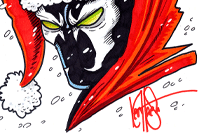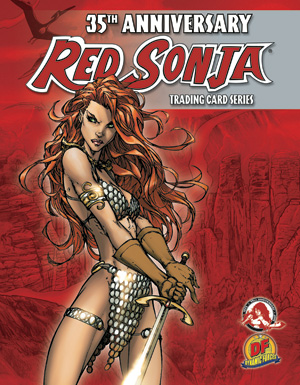|

|
JOHN ROMITA, SR. John Romita, Sr. (better known as simply John Romita) (born January 24, 1930) is an American comic book artist best known for his work on Marvel Comics' The Amazing Spider-Man. He was inducted into the Comic Book Hall of Fame in 2002.
John Romita graduated from the School of Industrial Art in 1947. He broke into comics on the seminal series Famous Funnies. "Steven Douglas up there was a benefactor to all young artists", Romita recalled. "The first story he gave me was a love story. It was terrible. All the women looked like emaciated men and he bought it, never criticized, and told me to keep working. He paid me two hundred dollars for it and never published it - and rightfully so".
Romita was working at the New York City company Forbes Lithograph in 1949, earing $30 a week, when a friend from high school whom he ran into on a subway train offered him $20 a page to pencil a 10-page story for him as uncredited ghost artist. "I thought, this is ridiculous! In two pages I can make more money than I usually make all week! So I ghosted it and then kept on ghosting for him", Romita recalled. The friend worked for Marvel's 1940s forerunner, Timely Comics, which helped give Romita an opportunity to meet editor-in-chief and art director Stan Lee.
Romita's first known credited comic-book art is as penciler and inker on the six-page story "The Bradshaw Boys" in Western Outlaws #1 (Feb. 1951) for Marvel's 1950s predecessor, Atlas Comics. He went on to draw a wide variety of horror, war, romance and other comics for Atlas. His most notable work for the company was the short-lived, 1950s revival of Timely's hit character Captain America, in Young Men #24-28 (Dec. 1953 - July 1954) and Captain America #76-78 (May-Sept. 1954).
He also was the primary artist for one of the first series with a Black star, "Waku, Prince of the Bantu" - created by writer Don Rico and artist Ogden Whitney in the omnibus title Jungle Tales #1 (Sept. 1954), and starring an African chieftain in Africa, with no regularly featured Caucasian characters. Romita succeeded Whitney with issue #2 (November 1954).
Spider-Man
At Marvel, Romita returned to superhero penciling after a decade working exclusively as a romance-comic artist for DC. He felt at the time that he no longer wanted to pencil, in favor of being solely an inker:
" I had inked an Avengers job for Stan, and I told him I just wanted to ink. I felt like I was burned out as a penciler after eight years of romance work. I didn't want to pencil any more; in fact, I couldn't work at home any more - I couldn't discipline myself to do it. He said, 'Okay,' but the first chance he had he shows me this Daredevil story somebody had started and he didn't like it, and he wanted somebody else to do it". " showed me Dick Ayers' splash page for a Daredevil asked me, 'What would you do with this page?' I showed him on a tracing paper what I would do, and then he asked me to do a drawing of Daredevil the way I would do it. I did a big drawing of Daredevil ... just a big, tracing-paper drawing of Daredevil swinging. And Stan loved it. "
Romita began a brief stint on Daredevil beginning with issue #12, initially penciling over Jack Kirby 's dynamic layouts as a means of learning Marvel's storytelling house style. It proved to be a stepping-stone for his famed, years-long pencilling run on The Amazing Spider-Man. "What Stan Lee wanted was for me to do a two-part Daredevil story [#16-17, May-June 1966] with Spider-Man as a guest star, to see how I handled the character".
Coming to The Amazing Spider-Man as successor of Spider-Man co-creator Steve Ditko, Romita initially attempted to mimic Ditko's style, but brought his own clean, soap operatic style of illustration to the book, and made the character his own.
Marvel Comics art director
When editor-in-chief and art director Stan Lee assumed the position of publisher, he promoted Romita to the latter position. In that capacity, Romita played a major role in defining the look of Marvel Comics and in designing new characters. Among the characters he helped design are the Punisher, Wolverine, and Brother Voodoo.
Later career
He collaborated with one of his two sons, John Romita, Jr., on The Amazing Spider-Man #500, drawing the last few pages of the issue. In the mid-2000s, Romita sat on the board of directors of the charity A Commitment To Our Roots.
Romita provided the cover for Daredevil #94 (Feb. 2007) in the style of his past work in romance comics.
This article uses material from Wikipedia and is licensed under the GNU Free Documentation License.All material is compiled from numerous sources and may not be accurate. Dynamic Forces, Inc and all of its subsidiaries cannot guarantee the validity of the content. |
 |








